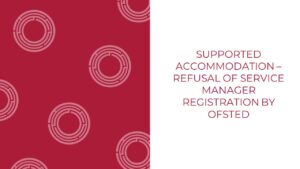In May 2013, the Department of Health published a Joint Policy Statement on “The regulation and oversight of NHS trusts and NHS foundation trusts” which highlighted the NHS single failure regime to be policed by CQC, Monitor and the NHS Trust Development Authority. Essentially what this document says is that CQC will be responsible for the diagnosis of quality problems in the NHS with Monitor for FTs and the TDA for NHS Trusts providing the therapy. There is little doubt that the therapy can be invasive and uncomfortable.
The statistics make for interesting reading. Monitor licences 147 FTs of which 8 were in special measures, 15 subject to other regulatory action and 9 under investigation as at 9 December 2013. In other words, more than 20% of FTs were subject to some form of regulatory activity and scrutiny. Equally, the TDA is not sitting on its hands. There are also 5 NHS trusts subject special measures under its regime.
Although the single failure regime will gain its statutory imprimatur through the Care Bill once enacted in 2014, the fact is that CQC, Monitor and the TDA are working to it now.
The example of The Queen Elizabeth Hospital King’s Lynn FT is a salutary reminder of how quickly matters can change on the regulatory front. This FT was judged compliant with Essential Standards in March 2012 and as late as March 2013, the FT was deemed compliant with 3 key essential standards that were reviewed on inspection. It was then that things started to go wrong. CQC reinspected the Trust in May 2013 and identified breaches across 9 standards, including 2 major breaches in relation to care and treatment and staffing. This was followed by a Risk Summit at the end of May 2013 at which it was agreed that NHS England would conduct a Rapid Response Review. A follow-up inspection by CQC in August 2013 identified 4 major breaches which led to service of warning notices by CQC. This was the trigger for Monitor to become involved under its enforcement regime. Monitor accepted “enforcement undertakings” from the Trust on 21 August around such matters as financial sustainability, A&E and quality improvement. In October 2013, further action was taken by Monitor in imposing “discretionary requirements” based on CQC’s action and the negative results of the Rapid Response Review. These requirements focussed on a range of matters including the appointment of an interim chair, an interim chief executive and attendance of TFT representatives at monthly meetings with Monitor. By that stage senior directors had either left or were planning to as a result of the regulatory intervention.
The risk is that NHS provider organisations adopt a passive approach to regulatory scrutiny in the hope that acting in such a way will see them right in the end. Such a response is naïve in circumstances where the enforcement agenda in the NHS has become far more evident over the last 10 months and is set to intensify in light of the regulatory changes highlighted in the Government’s Hard Truths response to the Mid-Staffordshire Public Inquiry Report. The new landscape will include a barring regime operated by CQC in relation to senior managers in NHS provider trusts and direct prosecutions by CQC of NHS organisations for breaches of the proposed duty of candour and of fundamental standards. A new rating system is also to be introduced from January 2014 for NHS acute trusts in circumstances where the anticipated Key Lines of Regulatory Assessment have not been published. We also have no idea about the remit of a proposed appeals process when it is felt that ratings are unfair.
At Ridouts we advise our clients to investigate regulatory issues promptly and effectively. There is only a short window in which to respond to a draft CQC inspection report or a warning notice. Equally, there is a statutory appeal process when Monitor issues a notice of intention to impose discretionary requirements. If you believe you have legitimate concerns about the regulatory process you should invoke these routes otherwise the case put forward by the regulator will remain on the record (and to quote the Joint Policy document from May 2013) as the “single version of the truth”. It is clear that Monitor and CQC will not second guess each other.
The stakes have never been higher for organisations and individuals. Legal advice should be sought in a timely fashion in advance of it becoming an enforcement situation. In particular, appropriate advice should be sought about preparing for inspection. It is important that trusts engage constructively and positively in the process, ensuring that regulatory findings and judgements are fair and supported by the facts. Your patients and staff would expect no less from you.
At Ridouts we represent providers in the NHS and independent sector faced with regulatory scrutiny. On a regular basis, we achieve excellent outcomes for clients who have experienced poor inspection outcomes or direct enforcement action. Please feel free to contact us- we’re here to help.







